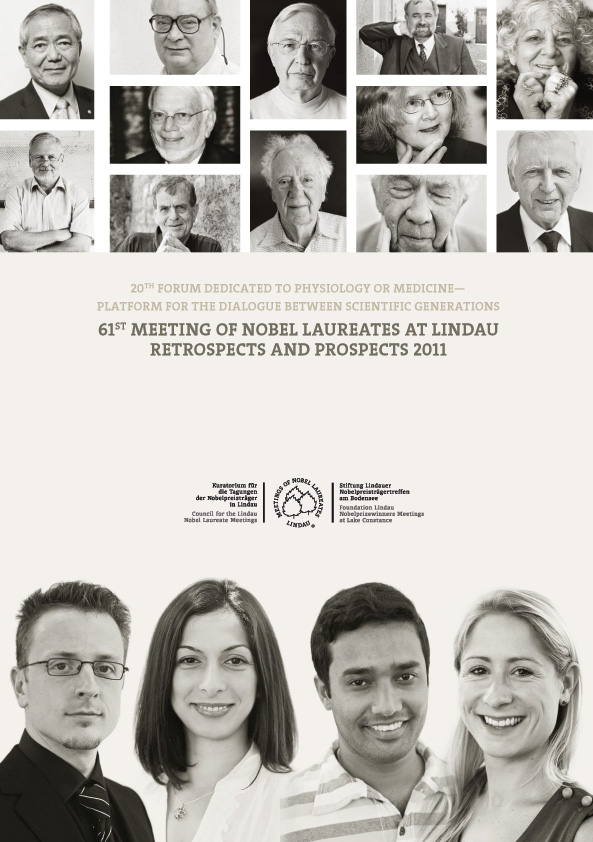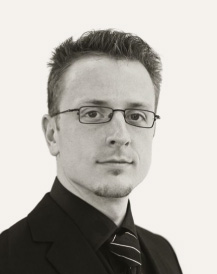Young scientist from Børresen-Dale's group presented in Lindau Nobel Laureate Meetings report

Ivan Potapenko - currently following the Medical Student Research Program (MSR) at the University of Oslo, working on the project "Anti-glycan autoantibody signatures of breast cancer; possible role in early diagnosis and malignancy status evaluation" with Anne-Lise Børresen-Dale's group at the Institute for Cancer Research - is one of the few young scientists to be presented in the meeting report, as well as having his picture on the front page.
The 61st Meeting of Nobel Laureates was dedicated to Physiology or Medicine and took place from June 26th to July 1st, 2011 at Lindau/Germany. 23 Nobel Laureates and 566 young researchers from 77 countries attended this unique forum.
The Lindau Meetings, and the underlying idea of creating a platform to facilitate encounters between Nobel Laureates and the world's best young scientists of tomorrow, enjoy widespread support. More than 220 Nobel Laureates are member of the Founders Assembly of the Foundation and demonstrate through their membership and their participation in the Lindau Dialogue their support for the principle of the Lindau Nobel Laureate Meetings.
Approximately 500 to 600 Young Scientists are invited to participate in each Nobel Laureate Meeting. They are selected by the review panel of the Council in cooperation with nearly 190 Academic Partners in an international selection process involving academies of science, ministries, foundations as well as top-ranking research institutions and universities from around the world. Students, PhD students and Postdocs who have distinguished themselves through outstanding achievements in their fields are eligible to apply for participation, at the recommendation of internationally recognised scientific institutions.
As the first step, Young Scientists submit their application to one of these partners. Based on the selection criteria formulated by the Council for each meeting, the Academic Partners carry out a preliminary evaluation, which is then forwarded to the review panel of the Council. Initially, more than 20,000 Young Scientists apply to attend each Lindau Meeting. With the help of the Academic Partners, this number is narrowed down to around 2,000 applicants, and these are submitted to the review panel.
Based on scientific publications, tutorial experience, university grades, recommendations by professors and personal letters of motivation, the members of the review panel select roughly 550 of the most talented applicants to attend the Lindau Meeting. Chairmen of the Councils review panel for the 2011 Lindau Meeting were Professors Hans Jörnvall and Helmut Sies. They were assisted by Nadine Gärber and Julia Schürer in the Executive Secretariat, and also by Andreas Schmidt and Alexandra Wimbauer.
566 Young Researchers from around the world were selected to participate in the 61st Lindau Meeting. All engaged in the field of physiology or medicine or related disciplines, they can be grouped as undergraduate students, masters and doctoral students, and young postdoctoral scientists.
The following standards and criteria serve to select participants from among all applicants. Participants shall
- show a genuine interest in science and research,
- show a strong commitment to their principal field of studies and to interdisciplinary work,
- receive strong support for their application from their academic advisor and/or from internationally renowned scientists, through a detailed letter of recommendation,
- be fluent in English, capable of active participation indiscussions,
- be among the top 5 per cent of their class,
- not already have a permanent position (researchers with permanent positionsin particular on the professorial levelwill generally not be admitted to the meeting),
- not have participated in previous Lindau Meetings,
The presentation of Potapenko from the meeting report:
| Ivan Potapenko, Norway | |
 | The 61st Lindau Nobel Laureate Meeting was most definitely one of the greatest highs in my scientific career, uniquely balancing the rich educational programme with an unparalleled social interactivity. Having brought some of the most prolific scientists of recent decades together in one location, it was an unmatched experience to be able to both to listen to their lectures and then have a chance to discuss the various topics with them. Even setting the top-notch scientific discourses aside, the sheer inspirational potential of these talks was immeasurable for me as a Young Scientist, reinvigorating and compelling me to explore further-both my own field and far beyond. But perhaps the single most outstanding aspect of this meeting that I believe sets it apart from others, was the social component. Meeting other Young Researchers from a variety of fields-despite being seemingly as far apart as they could possibly be, brought about a sudden realisation in me of how intertwined and interdependent today's research really is. While it is all too easy to constrict one's perspectives to a single direction of research, this meeting was an eye-opener for new horizons of novel approaches, alternative disciplines and an unequalled occasion to think out of the box. |
Focus: Global Health
With participants from 78 countries, this years Lindau Meeting of Nobel Laureates was more international than ever. Many of the Young Scientists came from developing countries where disease is rifeall the more reason, then, to link the meeting for the first time with the theme of Global Health. From the opening with a panel discussion on this topic to a range of lectures by Nobel Laureates and a final panel discussion on Mainau Islandglobal health was one of the central themes of the 61st Meeting of Nobel Laureates.
Panel at the Opening Ceremony
The stellar panel discussion at the opening ceremony included William H. Gates III, the founder of Microsoft and co-founder of the Bill & Melinda Gates Foundation, Nobel Laureate Ada E. Yonath, who won the 2009 Nobel Prize in Chemistry for her groundbreaking crystallography work revealing the structure and function of the ribosome, and two bright Young Researchers, Sandra Chishimba, a malaria researcher from Zambia, and Jonathan Carlson, who is researching HIV/AIDS at Microsoft Research.
William H. Gates III urged Young Researchers to consider the needs of the poorest people in the world in their work. Threats to global health include HIV/AIDS and malaria, but William H. Gates III said that people in low-income countries do not have their medical needs met by their governments or companies. To put this into perspective, he told the audience that ten times more funding is focused on finding a cure for male baldness than on finding a cure for malaria, which kills 850,000 people a year.
Links:
Annual report of the The 61st Meeting of Nobel Laureates - June 26th to July 1st, 2011
The Nobel Laureate Meetings at Lindau home page
Links to various vidoes recorded during the meeting
Nature Video presents 5 short films on physiology and medicine
Hungry for Knowledge, with Oliver Smithies:
An early-career scientist met with a Nobel laureate to discuss the choice between doing research or becoming a physician
Anne-Lise Børresen-Dale's group - Molecular Biology of Breast Cancer
Ongoing projects in the Medical Student Research Program (MSR) at the University of Oslo
Front page of meeting report:
